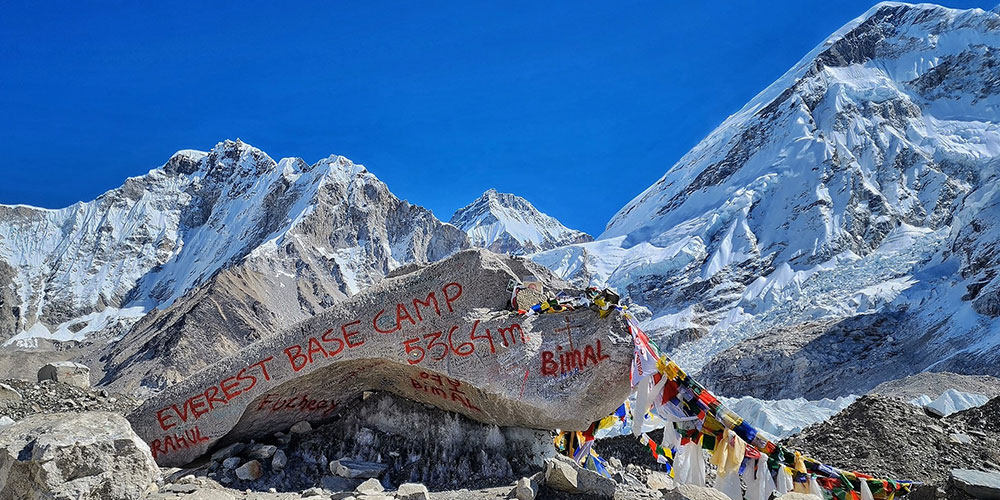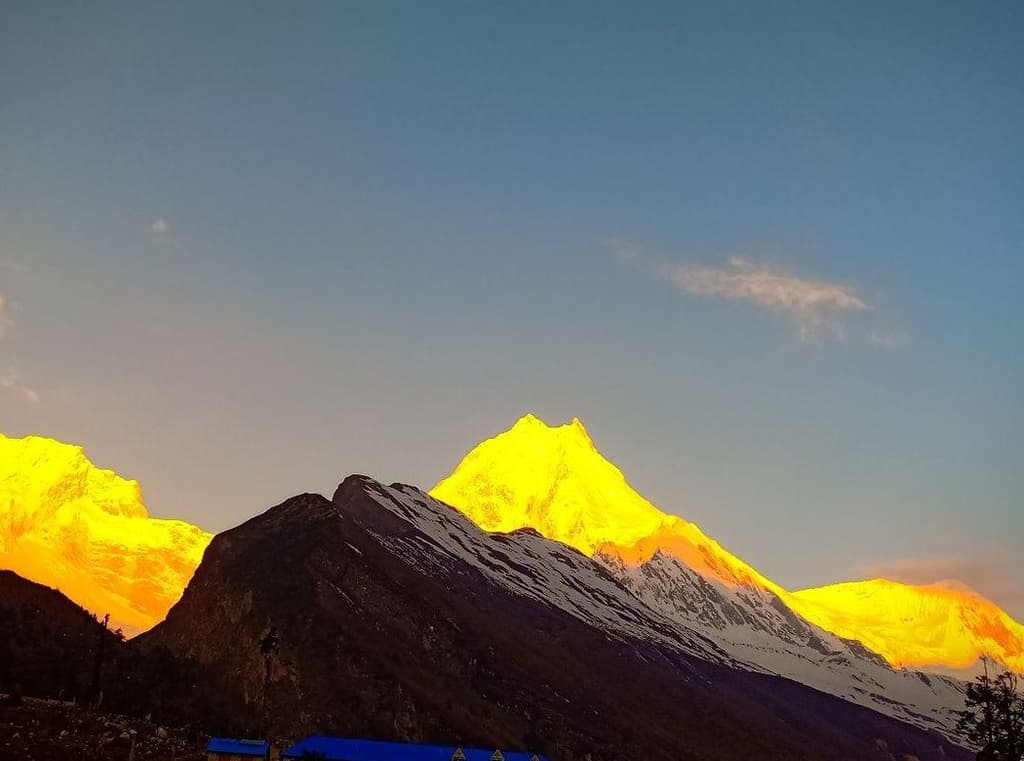September is one of the ideal months to embark on the adventure of Everest Base Camp Trek. Everest Base Camp Trek in September is an incredible trekking experience for all trekkers as it lies in the peak Autumn season. This all-around trekking experience will give you an outstanding adventure in the Everest region. You will have the best adventure as there is stable and dryer weather.
Embarking on this trek to Everest Base Camp in September is a joyful journey. The trail of this trek in September will provide you with awe-inspiring views of the snow-clad mountains. The courses will lead you through the serene terrains providing you with unforgettable experiences of a lifetime.
September is the best time to trek in Nepal. The trekkers will pass through the outstanding landscapes in the region. You will pass through the beautiful area leading you through the clear blue skies and fresh mountain air. The weather will allow you to trek in the great terrain with breathtaking views of the Himalayas.
Temperatures are mild, with moderate changes in the region. Thus trekkers will have a great time exploring the area during the trek. The trek will also take you through breathtaking Himalayan landscapes, Sherpa villages, lush forests, and monasteries in the region. The trails will lead you through the natural beauty and rich culture.
Trekking to Everest Base Camp is quite a challenge that will lead you through the incredible terrains and test yourself to the core. You will need perseverance and determination to complete the test. You will get a sense of accomplishment in this trek in the Everest region.
September is the ideal time to go for the Everest Base Camp Trek. The region's stunning natural beauty and snow-clad mountains is enthralling. The uphills and downhills terrains of the region can get quite challenging with rugged terrain. However, the trekkers will get the best views of Mount Everest, Ama Dablam, Lhotse, Nuptse, etc.
Overall, the EBC trek September is an unforgettable trip. Trekking the Everest base camp is a great experience overall due to favorable weather conditions and climate. Read in detail to learn more about the Everest Base Camp trek in September. Happy traveling!
Highlights of the Trip
- Dry and stable weather with moderate daytime temperatures
- Clear skies to observe spectacular views of the mountains.
- Experience Sherpa culture and traditions
- Passing through Sagarmatha National Park
- Exploring flora and fauna, including rare and endangered species
- Crossing through the Khumbu Glacier Ama Dablam, Lhotse, Nuptse, and Everest.
- Visiting the famous Tengboche Monastery.
- Climbing Kala Patthar and observing the Himalayan sunrise.
Everest Base Camp Trek in September Weather
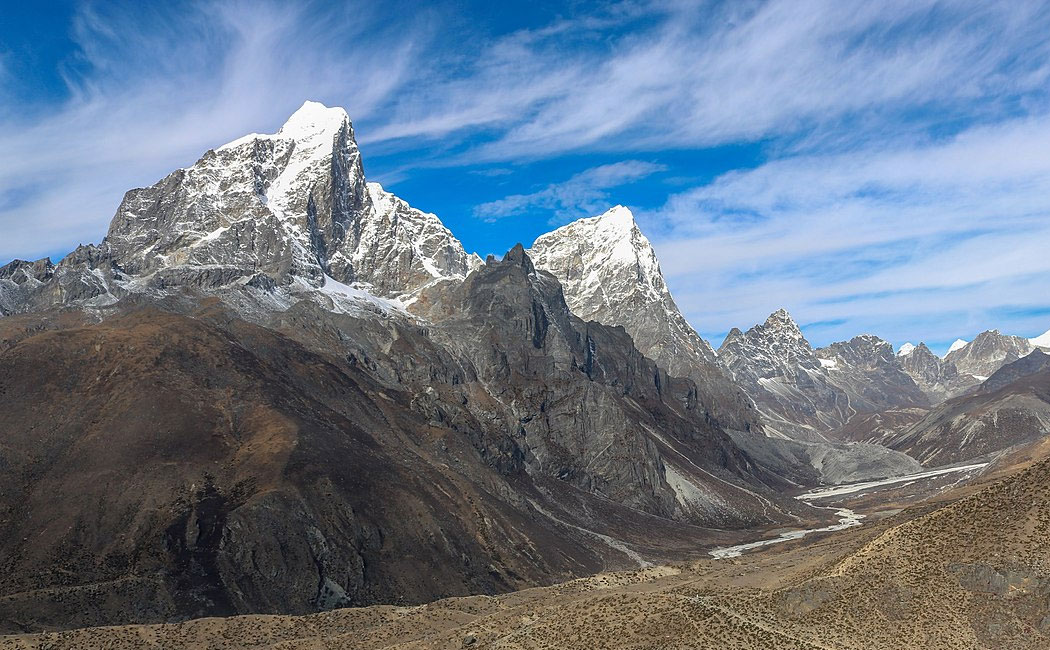
September is the best time for the Everest Base Camp trek. The sunny weather and dry atmosphere make the trek quite a lovely challenge. The trail will lead you through the challenging terrain, and you will experience stable temperatures in the region.
The temperatures range around 10 to 15 degrees Celsius (50 to 59 degrees Fahrenheit) in the daytime. The temperatures drop around -5 degrees Celsius (23 degrees Fahrenheit) at nighttime.
Temperatures in the region can go below-freezing levels at high altitudes. Hence, you must carry proper gear and clothing for cold weather conditions. However, there is some rainfall that you can experience in the region that you can tackle with rain cover.
You will get clear snow mountain views and good visibility along the trails. Overall ,Trekking to Everest Base Camp September is ideal as there are favorable weather conditions.
Everest Base Camp Trek Difficulty in September
Although September is the peak season for travel in the Everest region. But there are specific challenges that you need to face. Some challenges for the Everest base camp trek in September:
Crowded trails:
September is the peak and popular time for the Everest Base Camp trek. Hence, you will need to face this difficulty as it can slow your process and make it difficult to trek in the quiet region.
Altitude sickness:
The altitude in the region is another challenge in the trek. You will pass through some of the significant high altitudes above 5000m. Hence, you will need to face difficulties like altitude sickness, which can be challenging for the region.
Challenging terrain:
The challenging terrain remains the same throughout the year, even in September. Hence, you will find various challenges along their tail. You will need to face some incredible challenges along the trail. There is unpredictable weather in September as well.
You will need to remain physically demanding and have a basic level of fitness and stamina. You will hike uphill and at high altitudes for several hours daily. It is essential to prepare for the physical demands of trekking and to train accordingly.
See also:- Everest Base Camp trek difficulty level
Why Go for the Everest Base Camp Trek?

Favorable weather:
September comes after Nepal's monsoon season, which makes it ideal weather for the Everest base camp trek. You will get sunny and dry weather conditions in the region with incredible views of the snow-clad mountains. The temperatures are ideal and neither hot nor cold in the area.
Festive atmosphere:
September has many festivities in the region. You will traverse the trails while observing the local festivals such as Dashain and Tihar with the locals. You will also get spectacular celebrations and a unique atmosphere in the area. September is the best time for Everest Base Camp trek trek due to the weather, which can be bustling during this season.
Incredible Landscape:
September is ideal to observe the lush mountains, and wildflowers bloom along the trails. There are breathtaking views of the Himalayas. Overall, September is an ideal time for the trek due to the excellent weather conditions.
Food and Accommodations Along the Trail
The Everest Base Camp trek has many tea houses along the way. Most teahouses are fully functional by September, providing you with Nepalese and western dishes. You will love having delicious local cuisine. There is a small variety of local cuisine as well including. Dal Bhat is a traditional Nepalese dish including lentil soup, rice, and vegetables. Hikers will get adequate energy and nutrition for the trek.
The accommodation, like teahouses and lodges, provide comfortable shelters. There you will get a room with beds, blankets, and pillows. You will also find communal bathrooms. Teahouses are available in September, as it is the peak season for September is a popular month for trekking to Everest Base Camp.
Some tea houses also include hot showers, charging and WiFi. However, they cost extra and are only available in some teahouses. However, it is essential you need to bring your sleeping bag to tackle the cold.
Are Guides essential for the Everest Base Camp Trek In September?

While not essential, the Everest Base Camp trek guide can help you immensely during the trek. The trail will become extremely challenging. The courses can get quite tricky in the region. You will have a high chance of getting sick, injured, and lost in the area.
The trail will lead you through the many hazardous trails along the route, and poor visibility. Hence, a guide can be a great help for beginner trekkers. A guide will keep you on the right track. They will help you with first aid and also any other medical emergencies.
Moreover, they will also help you with the local culture and heritage of the region. You will have a culturally enriching experience during the trek. You will also not have to worry about the accommodation, or meals, in the company of a guide. Hiring a guide enhances the Everest base camp trek experience.
Altitude sickness Along the Trail
Acute Mountain Sickness (AMS), is a tough nut to crack along the trails of this magical Everest Base Camp trek. While trekking to altitudes above 5,000 meters, trekkers must be aware of altitude sickness. The air pressure and oxygen levels get reduced significantly leading to toughness when it comes to proper functioning and breathing.
AMS is the major cause for trekkers abandoning their trek as their body becomes unable to adapt to the high altitude. There are symptoms like headache, nausea, loss of appetite, dizziness, fatigue, etc, caused by AMS. It can occur to trekkers of any age, sex, gender, or fitness level.
To avoid AMS, acclimatize and rest between the trek. Hence, most trekking itineraries in the Everest region include these days, allowing you to breathe in a hectic schedule. You should trek at a gradual pace while drinking a high amount of fluid to prevent AMS.
You should descend immediately in case it gets tough to travel at a high altitude. The trekkers should examine themselves if they can continue and seek medical help if necessary, as AMS can be life-threatening if ignored for too long. Overall, the risk of AMS can be reduced significantly if measures are implemented well and thoroughly.
Packing list - Everest Base Camp Trek in September
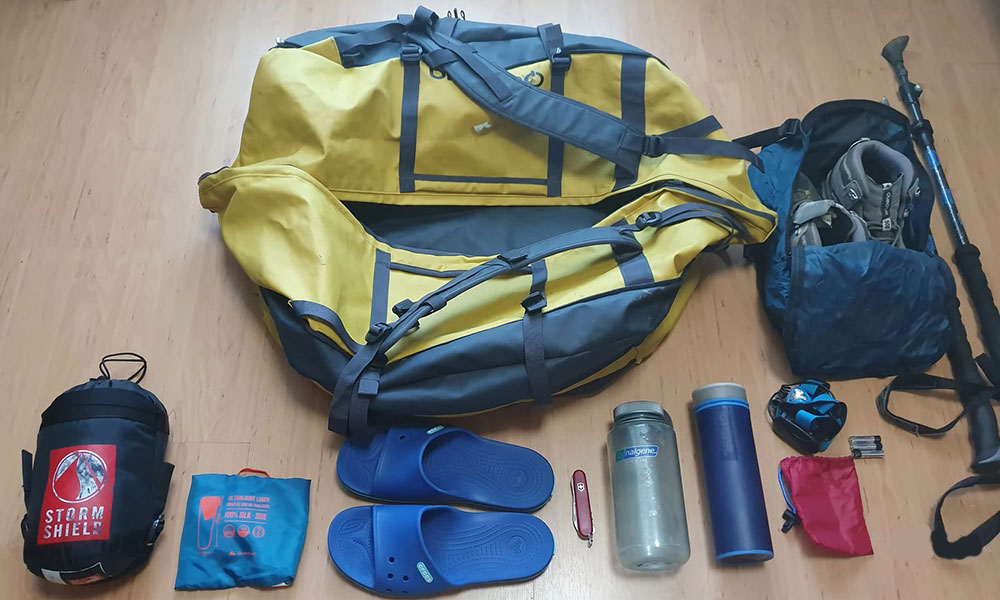
Clothing:
- Hiking pants
- Fleece jacket
- Long-sleeved shirts
- Waterproof jacket
- Waterproof pants
- Underwear
- Insulated jacket or down jacket
- Gloves (liner and waterproof)
- Hiking socks
- Sun hat
- Trekking boots (broken in)
- Sports bras (for women)
- Sandals
Equipment:
- Backpack (50-60 liters)
- Sleeping bags
- Headlamp
- Extra batteries
- Sleeping bag (-10°C comfort rating)
- Water purification tablets
- Water bottles
- Trekking poles
- Sunscreen with high SPF
- Lip balm
- Sunglasses with UV protection
- Personal first aid kit
- Lightweight towel
- Toiletries
- Toothbrush
- Toothpaste
- Wet wipes
- Hand sanitizer
- Insect repellent
Miscellaneous Items:
- Camera with extra batteries
- Memory cards
- Portable charger
- Books
- Entertainment devices
- Board games
- Snacks (energy bars, chocolate bars, etc.)
See also:
- Training for Everest Base Camp
- Everest Base Camp Elevation and FAQs
- 13 Things to Know before Everest Base Camp Trek
Essential Tips for the Trek
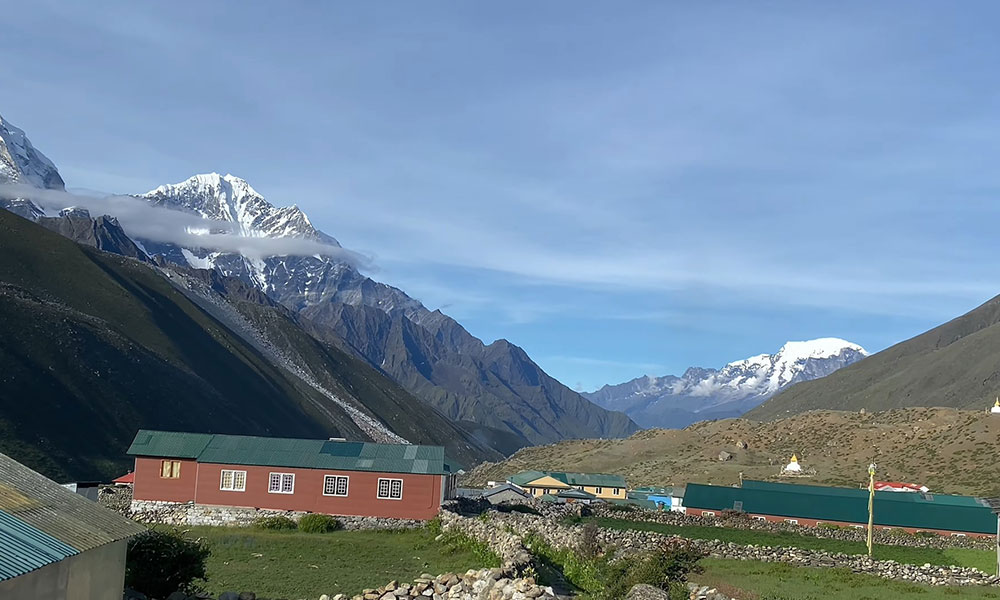
Train well in advance:
Trekking well in advance is essential for the Everest base camp trek. You will need to build stamina and fitness for the tour. You must focus on strength, endurance, and cardio training 2-3 days before the trek.
Acclimatization
Acute mountain sickness is a severe problem. Hence, you will need to acclimatize to the region. It would help if you also took rest days and trekked gradually.
Light packing:
You should also pack lightly since the load is a huge problem during the trek. You can also hire a porter if necessary. Trekking gear and layers of clothing are essential.
Hydrate regularly
Hydration at regular intervals is essential for the trek. You will also get to tackle altitude sickness through hydration. You can use water bottles and purification tablets along the trail.
Respect culture:
You will travel in remote landscapes with profoundly conservative and religious societies, so you should respect the local culture and broma and avoid any taboo along the trail.
Hire a guide or porter:
Hiring a guide will help you immensely and make the trek safe and enjoyable. You can also hire a porter to carry if your luggage is heavy.
Emergencies preparation
The region has altitude sicknesses and other emergencies, so you need to tackle them through a first aid kit and travel insurance for the trek.
Trips you may like:
- Everest Base Camp Trek with Helicopter Return
- Everest Panorama Trekking
- Jiri to Everest Base Camp Trekking
- Gokyo Lakes Trek
Final Say
EBC trek September is considered one of the best times for the trek in the Everest region. September comes after the wet monsoon which allows you to trek in the region without any hassle. There is relatively stable weather and clear views of the surrounding mountain ranges.
There are mild and warm temperatures during the day. Nights are colder but not extremely cold. It takes around 7-12 days to complete the trek passing through the unique village settlements that offer incredible culture insight. If you want to complete the trek in less days without having any impact on the travel experience and thrills, check out our package- Short Everest Base Camp Trek, which will help you finish the trek in just 10 days!
The majestic views of Mount Everest, Lhotse, Nuptse and other mountains is the highlight of the trek. The trek will lead you through Sagarmatha National Park, and the lush and diverse flora and fauna of the region. Overall, Everest Base Camp Trek in September is an ideal adventure for all trekkers who love to trek in the wild and experience rich cultural trails.
Frequently Asked Question (FAQs)
Why is the Everest Base Camp trek in September ideal?
The EBC trek in September is ideal due to the best weather conditions, dry weather, and clear visibility.
Are permits essential for the Everest Base Camp trek?
Yes, Everest Base Camp requires permits, including Sagarmatha National Park permit and Pasang Lhamu rural municipality permits.
What is the difficulty of the Everest Base Camp trek?
The Everest Base Camp trek is moderate and requires essential fitness and endurance. You will have to trek for 6-7 hours each day and reach a maximum elevation of 5,545 meters (18,192 feet).
What type of accommodation along the Everest Base Camp Trek?
Accommodation along the Everest Base Camp Trek is in the teahouses in the region. The accommodation such as beds, blankets, and pillows. Some teahouses have shared bathrooms, hot showers, charging stations, and WiFi.
Can you trek Everest Base Camp solo?
Yes, the Everest Base Camp trek is excellent solo, but it is generally recommended to trek without a guide. They will help you in various aspects along the trail.
What are the items required for the Everest Base Camp Trek?
The EBC trek requires you to bring warm clothes, sturdy hiking shoes, a sleeping bag, a backpack, trekking poles, a headlamp, sunscreen, a hat, gloves, a first aid kit, snacks, etc.
What is the weather like in the Everest Base Camp Trek in September?
The weather along the Everest base camp trek is stable and dry with less weather related challenges. There are mild temperatures that make it favorable for a trekking adventure.
Is the Everest Base Camp Trek in September safe?
Yes, the Everest Base Camp Trek in September is perfectly safe. Therefore, you can trek in the Everest region with ease.
Is there any experience required for the Everest Base Camp Trek in September?
The Everest Base Camp Trek in September does not require any experience in the high altitude. However, the trekkers must have a basic level of fitness and stamina for the trek.
Are guides essential along the Everest Base Camp Trek in September?
Professional guides are essential as they will help you along the trails in a significant manner. They will help you with navigation and cultural exploration. They will also be a great help during any emergency conditions along the trails.
Are porters essential along the Everest Base Camp Trek in September?
Yes, porters are essential for the trek as they will carry your luggage so that you can trek without any hassle in the region.
Are altitude sickness a big threat in the Everest Base Camp Trek in September?
Yes, altitude sickness is a big challenge in the Everest base camp trek. To tackle it, you need to acclimatize, and rest and hydrate in the region.

